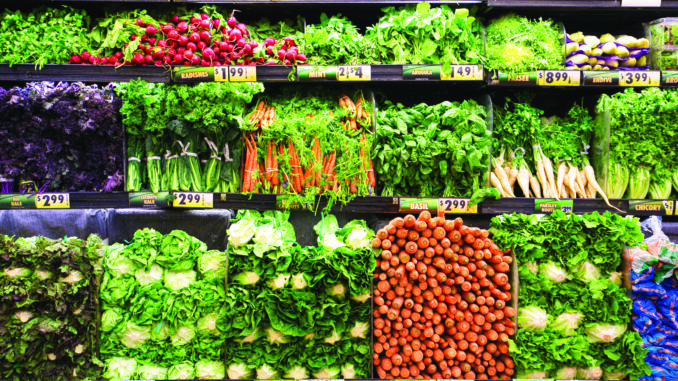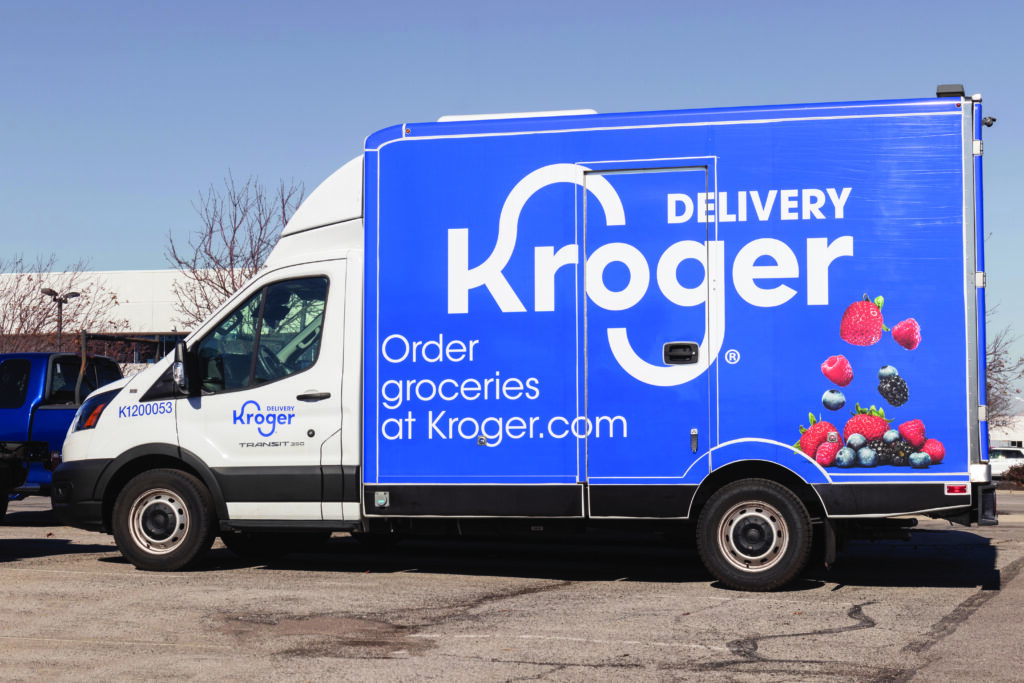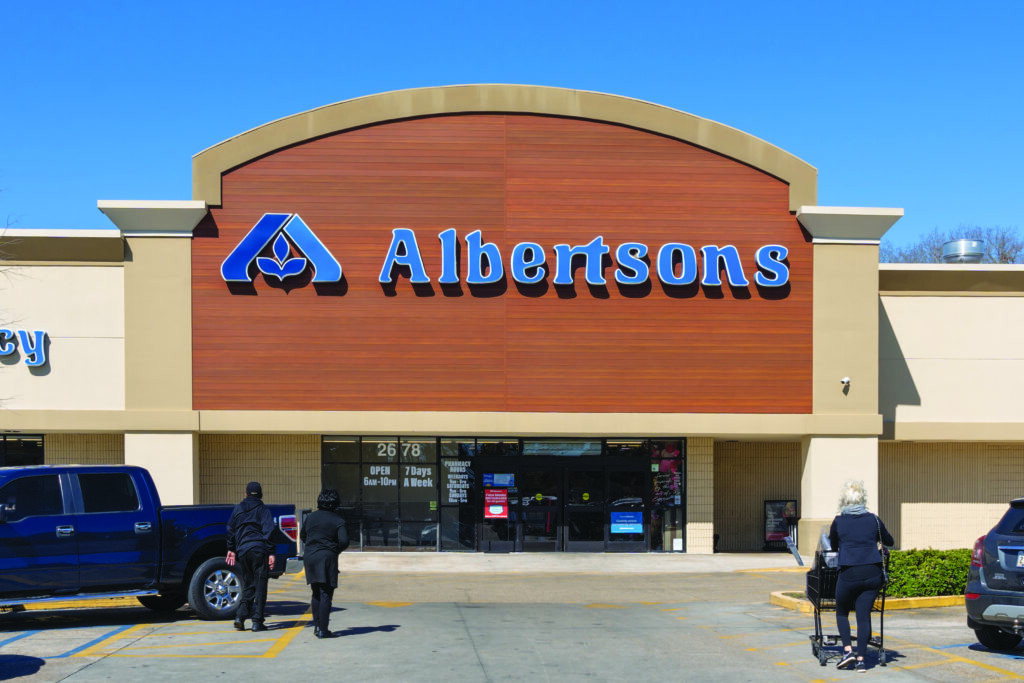
Kroger/Albertsons deal is sure to impact Ohio’s food business
By Terry Troy
Last month, Cincinnati-based Kroger and Boise-based Albertsons entered into a definitive agreement to merge their organizations, creating one of the most powerful grocery store chains in the nation.

“We are bringing together two purpose-driven organizations to deliver superior value to customers, associates, communities and shareholders,” says Rodney McMullen, Kroger’s chairman and chief executive officer, who will continue serving as chairman and CEO of the combined company. “Albertsons Cos. brings a complementary footprint and operates in several parts of the country with very few or no Kroger stores.
“This merger advances our commitment to build a more equitable and sustainable food system by expanding our footprint into new geographies to serve more of America with fresh and affordable food and accelerates our position as a more compelling alternative to larger and non-union competitors. As a combined entity, we will be better positioned to advance Kroger’s successful go-to-market strategy by providing an incredible seamless shopping experience, expanding Our Brands portfolio, and delivering personalized value and savings. We’ll also be able to further enhance technology and innovation, promote healthier lifestyles, extend our health care and pharmacy network, and grow our alternative profit businesses. We believe this transaction will lead to faster and more profitable growth and generate greater returns for our shareholders.”

But what impact will this proposed merger ultimately have on the food business here in Ohio? Retail analysts and economic professors have differing opinions, but all agree on one point: The combined stores will have plenty of market clout.
“The merger will create the largest supermarket chain in the United States—with first place Kroger and second place Albertsons combining,” says Erwin F. Erhardt III, a professor in the Department of Economics at the Lindner College of Business at the University of Cincinnati. “Although there will be significant costs associated with the merger, it should provide the combined entity with the opportunity to streamline advertising, discounting and reward programs along with the ability to purchase inventories in expanded bulk, providing for a better discount from supplies across industries.”
However, mass merchants and e-retailers have been moving into the food retailing segment, causing pure grocery chains like Kroger to re-think operational and competitive strategies.

David Brasington, Kautz Chair in Political Economy and a professor in the Department of Economics at the University of Cincinnati, cites recent industry statistics from Business Insider.
“Kroger has a 10% market share in groceries,” he says. “Walmart has 21%, Costco is No. 3 at 7%, and Albertsons is the No. 5 player with 6%. So combining with Albertsons would bring Kroger’s market share closer to Walmart’s.”

“The impact of a merger like this is going to be complicated and far reaching,” adds Edward “Ned” Hill, professor of economic development at the John Glenn College of Public Affairs at The Ohio State University. “And whoever says anything about it definitively is bound to be wrong.”
But there are two things that Hill notes about the deal.
“First of all, they have already gone through the preapproval process internally so they know the markets where they have store overlaps and they know which stores they will have to [divest],” Hill says.
The second is that the deal will allow Kroger to compete more effectively with larger players like Walmart and Amazon, the latter of which is moving up very quickly in the segment thanks to its acquisition of Whole Foods.
“In order to compete in the national grocery marketplace, you have to have enough scale to compete with Walmart and Amazon,” Hill says.
“Scale and cost savings are real possibilities,” adds Brasington. “Kroger also has a track record of buying a competitor and scaling what that competitor did well across the various Kroger brands of stores.”
So the merger is one giant leap forward in helping both chains compete in a market that is becoming increasingly cost sensitive.
Combined sales of the two organizations have been estimated to be nearly $210 billion, still about $10 billion shy of Walmart. Together, both stores employ more than 710,000 associates and operate 4,996 stores, 66 distribution centers, 52 manufacturing plants, 3,972 pharmacies and 2,015 fuel centers.
While the new company is expected to divest 100 to 375 stores to satisfy FTC regulators, that still leaves Kroger with more than 4,500 stores and operations in more than a dozen states.
The deal should allow Kroger to expand on operations that help it to compete against non-traditional food retailers like Sam’s Club and Costco, especially when it comes offering bulk buying and customer service.
“The way Kroger entered Northeast Ohio is interesting,” says Hill. “They essentially have large warehouses where they will pick and ship directly to the consumers—which is something they learned during COVID, but is actually more of a pure reaction to Amazon.”
Last month Kroger expanded this concept further, with the official opening of its newest Customer Fulfillment Center (CFC) in suburban Detroit. The CFC leverages advanced robotics technology to pick products from a customer supplied list.
Other food retailers have experimented with this strategy, using associates to mixed results. Grocery chains want to offer the convenience of a store pickup without paying an associate $20 an hour to run around a store picking up items, which would require some sort of automated process. In addition, such shopper services also eliminate added sales caused by impulse purchases, which many grocery retailers are coming to rely on due to the larger margins afforded by non-food SKUs (stock keeping units).
Obviously, the merger will help the new entity realize cost efficiencies.
In a recent interview on CNBC, McMullen estimated the cost synergies that can be realized between the two organizations at $500 million, “which he [McMullen] says will be invested toward lower prices for consumers,” says Brasington.
“There are challenges to getting the deal through the Federal Trade Commission, which will at a minimum require Kroger to divest some of its stores in markets in which both Kroger and Albertsons have a significant presence,” he adds. “McMullen thinks the merger is essential to compete against online retailers (read Amazon) and big-box retailers (read Costco, Publix, BJ’s Wholesale and Walmart). If there really is less competition, Kroger will be able to raise prices some.”
The merger’s largest impact, at least here in the state of Ohio, will be on suppliers. Whenever you have a small amount of very large customers, there will be price pressure as well as increased competition for shelf space, analysts says.
By its own admission, Kroger has a long track record of lowering prices. Consistent with prior transactions, Kroger plans to invest in lowering prices for customers, according to the company—which is good for consumers, but might not be all that good for our overall economy here in Ohio.
“Ohio has a very large food manufacturing base,” says Hill. “We have food companies scattered all over the place. If their margins get squeezed, it is going to have an impact on our overall economy.”
The food and agribusiness is one of the largest industries in Ohio, boasting literally hundreds of companies that cultivate, process, package, distribute and market food and drinks enjoyed by consumers here and around the world.
According to JobsOhio, Ohio is home to over 1,300 food manufacturing facilities of all sizes in just about every food production segment. Ohio’s food and agribusiness sector contributes $16.4 billion to the state’s Gross State Product annually. Employment in food manufacturing totals about 70,000 jobs with an additional 78,000 employment in farming and ranching. For its part, Kroger employs almost 36,000 associates at its headquarters and more than 211 retail stores in our state.
“The problem you have is that there is not only concentration in sales to the consumer, but also the producers selling to the company,” said Hill. “This will cause a lot of price pressure on suppliers to the remaining stores.”
